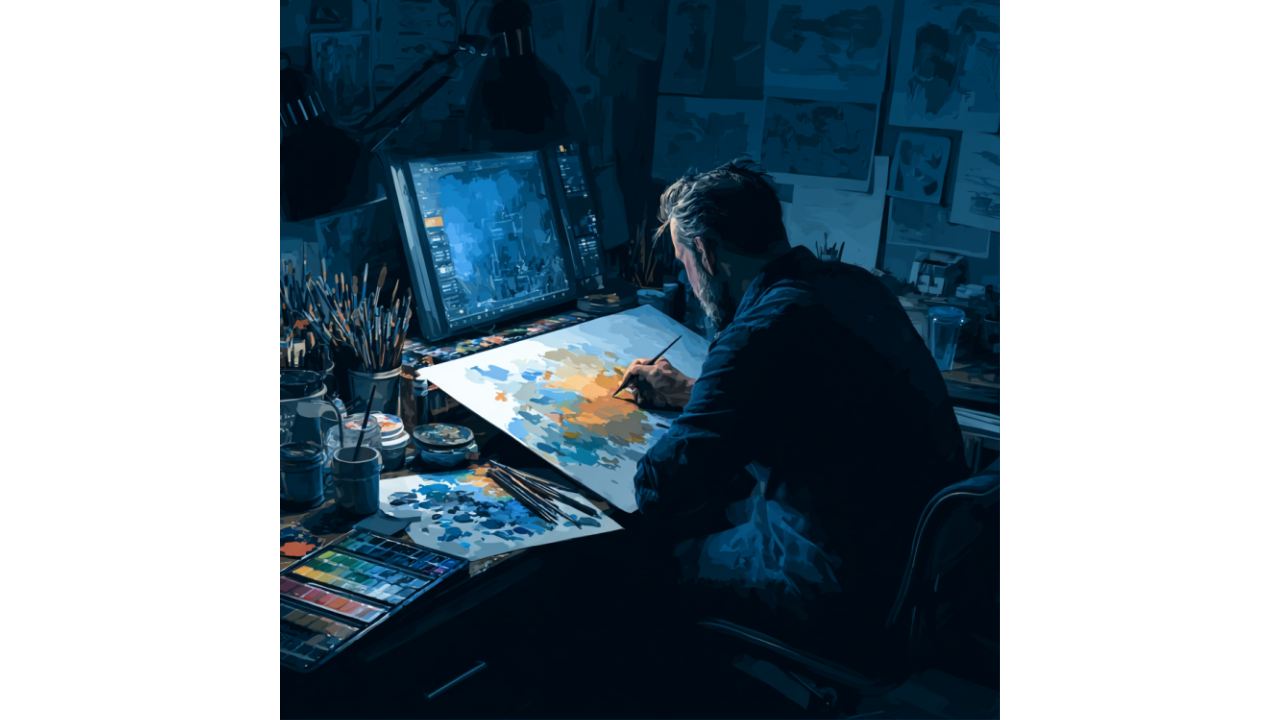Canva's AI Video Tool is Changing Design Jobs
Canva just integrated Google's Veo 3 video generation model into its platform, allowing users to produce 8-second cinematic video clips with sound...
4 min read
 Writing Team
:
Jul 1, 2025 8:00:00 AM
Writing Team
:
Jul 1, 2025 8:00:00 AM
-4.png)
Bottom Line Up Front: CJ ENM's "Cat Biggie" isn't just a cute animated series about a cat adopting a chick—it's the shot heard 'round the animation world. The Korean entertainment powerhouse just proved that six specialists can accomplish in five months what traditionally required 20-30 people over 1-2 years. We're not witnessing incremental change; we're watching the birth of Animation 2.0.
The Numbers That Break Your Brain
Let's start with the math that should make every studio executive lose sleep (in the best possible way). CJ ENM's team of six specialists completed "Cat Biggie"—30 episodes of two-minute AI-generated animation—in just five months, including content planning and character development. Traditional 3D animation? That typically requires 20-30 staff members and a development period of 1-2 years.
We're not talking about marginal efficiency gains. This is 4x faster with 80% fewer people. If that doesn't make you sit up and recalculate every business model in entertainment, you're not paying attention.
The global generative AI in animation market tells the same story at scale: projected to explode from $1.32 billion in 2023 to $13.39 billion by 2030, with a staggering 40.3% CAGR. But CJ ENM didn't wait for the market to mature—they built the future and released it on a Tuesday.
CJ ENM's strategy reveal reads like a masterclass in vertical integration meets artificial intelligence. Their proprietary "Cinematic AI" system seamlessly integrates image, video, sound, and voice—unlike conventional workflows that require separate tools for each component. Meanwhile, their "AI Script" system functions as an IP discovery agent, analyzing consumer demand and market trends to identify promising properties.
Chief Strategy Officer Shin Keun-sup didn't mince words: "We are applying AI across the entire content value chain—including planning, production, distribution, and marketing—to expand AI content production across genres and formats. This allows us to secure next-generation IP."
This isn't just about making animations faster; it's about reimagining the entire creative economy. When the same company that produced "Parasite" and "Queen of Tears" commits to becoming "a global AI studio," the rest of the industry should take notes.
What makes CJ ENM's achievement remarkable isn't just the speed—it's solving animation's most vexing AI challenge. As Baek Hyun-jung, head of AI business and production, explained: "The key challenge was controlling and expressing the dynamic movements unique to animation."
Anyone who's experimented with AI video generation knows the consistency problem: identical characters, coherent backgrounds, and fluid motion across scenes remain the holy grail. CJ ENM cracked it using their Cinematic AI to convert characters into 3D data and train their production system accordingly.
The result? A "high level of completeness in the final output" that will launch globally on YouTube in July. This isn't a tech demo or proof-of-concept—it's market-ready content produced at a fraction of traditional cost and timeline.
The implications ripple far beyond cute cat animations. CJ ENM already has two additional AI projects in development: the Greek mythology-inspired series "Legend" and the film "Apartment," both targeting late 2025 releases. They're not testing the waters—they're building the new ocean.
The traditional animation industry is sitting on a $371.85 billion market in 2024, expected to reach $590.85 billion by 2033. But these projections were made before someone proved you could collapse production timelines and team sizes by orders of magnitude. When the fundamental economics of content creation shift this dramatically, market forecasts become ancient history.
Consider the competitive dynamics: while Western studios debate AI ethics and worry about union negotiations, CJ ENM is shipping product. The Animation Guild's own research shows that 21.4% of film, television, and animation jobs could be consolidated, replaced, or eliminated by GenAI by 2026. CJ ENM just demonstrated that the timeline isn't 2026—it's now.
The genius of CJ ENM's approach lies in understanding what AI amplifies versus what it replaces. "Cat Biggie" required the same creative fundamentals—character development, story planning, emotional resonance—but eliminated the technical bottlenecks that traditionally separate idea from execution.
This isn't about replacing animators; it's about liberating them from the mechanical constraints that limit creative iteration. When you can test a story concept in weeks instead of months, when character designs can evolve in real-time, when entire sequences can be generated and refined rapidly, the bottleneck shifts from production capacity to creative vision.
The demand for animators with Generative AI skills is expected to increase by over 25% in 2024. Integration of Generative AI into animation workflows can lead to a 20% increase in creative productivity. We're not witnessing job destruction—we're watching job evolution at warp speed.
CJ ENM's move has strategic implications that extend far beyond animation efficiency. In an era where Netflix, Disney+, and other platforms are desperate for differentiated content, the ability to produce high-quality animation at a fraction of traditional cost creates unprecedented competitive advantage.
"Cat Biggie" launches globally on YouTube—not a premium streaming platform, but the world's most accessible distribution channel. This signals something profound: when production costs collapse, content strategy can become radically democratic. You don't need massive distribution deals when you can afford to experiment with direct-to-audience releases.
For creative professionals, the CJ ENM announcement represents both opportunity and urgency. The company isn't just using AI tools—they're training "a new generation of creators equipped with AI technology, business, and content planning expertise."
This is the new creative literacy: understanding how to direct AI systems, curate outputs, maintain narrative coherence, and blend human creativity with machine capability. The professionals who master this integration won't just survive the transition—they'll define it.
We're witnessing the democratization of high-end animation production. When six people can accomplish what previously required armies of specialists, the barriers to entry collapse. When production timelines compress from years to months, creative iteration accelerates exponentially.
CJ ENM didn't just create an animated series—they've proven that the future of entertainment production is smaller teams, faster timelines, and broader creative possibilities. This is animation's iPhone moment: the point where everything changes, and there's no going back.
The question isn't whether other studios will follow CJ ENM's lead—it's how quickly they can adapt before the gap becomes insurmountable. In an industry built on creative vision and technical execution, CJ ENM just made the technical barriers disappear.
The cat's out of the bag, and it's about to change everything.
Ready to navigate the AI content revolution? Winsome Marketing's growth experts understand how AI is transforming every aspect of content creation, from animation to marketing strategy. We help companies harness these breakthrough technologies to create competitive advantages, build authentic audience connections, and scale creative output intelligently. Because in a world where six people can create what used to require dozens, the winners will be those who master the art of human-AI collaboration.
.png)
Canva just integrated Google's Veo 3 video generation model into its platform, allowing users to produce 8-second cinematic video clips with sound...
-2.png)
We're living through music's iPhone moment. Just as smartphones didn't just improve phones but created entirely new industries, AI isn't simply...

While every tech CEO races to slap "AI-native" on their LinkedIn bios, Dylan Field quietly demonstrated what mature AI strategy actually looks like....